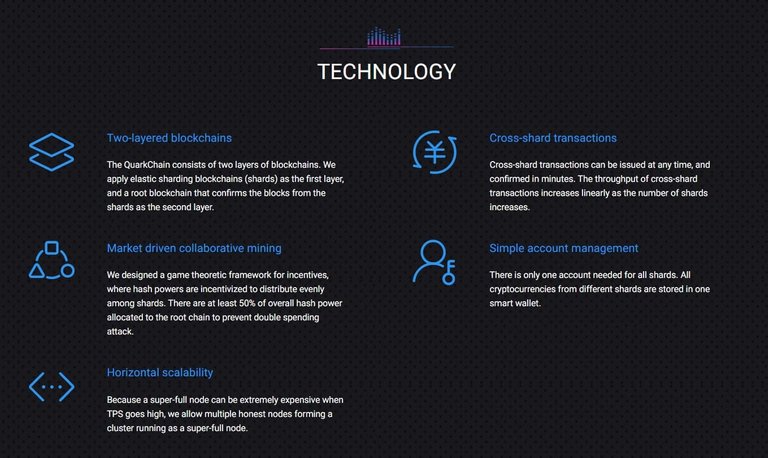
QuarkChain employs two layers of blockchain system of methodology. It operates with two layers of blockchain system for being the first and foremost elastic sharded blockchain. It is like a confirmation to the transactions for being in the process of former recording to relevant data. The user's account and transactions are made in between the accounts through some shards by the formulation of the minor blockages. QuarkChain has made up its structure with an aim to reach their settled goal be commercialized globally with the standard. It has a goal to earn more than a million TPS user by implementing the solution to the blockchain and making it secure, decentralized and scalable. The high capacity peer-to-peer transaction system is enabling the resemblance of the system and making it true to the clients.
Peer-to-Peer Transactional System
QuarkChain is utilizing the peer-to-peer transactional system in order to utilize the concurrent aspects of the horizontal and vertical scaling solution. This increases the capacity of the concurrency of the transactions similar to the increase of the volume of a rectangular-like horizontal and vertical dimensions. This would increase the terms of the solution at the same time. This happens by the number of shards that increases the capacity of the blockchain process to transact more into the increase in gaining ground towards the target of 1 million TPS.
Core Features
QuarkChain Network enables some core features, unlike some other existing approaches. This may have some serious attempt to effects the scalability of problems that has some exchanging feature. It has been designed in such a way so that the scalability of QuarckChain Network is developing in accordance to some important value such as usability to be faster and simple, decentralization for public participation, safety for reliability. All these features are making the QuarkChain reliable and reasonable for the users.
Anti-Centralized Horizontal Scalability Expansion

In order to build a peer-to-peer network, the expansion of anti-centralized scalability impervious to the malicious attacks for traditional blockchain technology and it will require checking every node for making it validate for all the blocks and needs to reject all the invalid blocks, the QuarkChain nodes of the network has validation for minor blocks of root chain which is also known as super-full node. Even if the nodes of the QuarkChain Network run through the super-full node, the blockchain system will have some levels of safety for the traditional blockchains.
Operation of Super-Full Node
Running the Super-full node can be expensive into the high throughput of the blockchain system. In order to generate 1 million of TPS with the transaction, it has 250 bytes that may need the 2Gps bandwidth of the network. This becomes a great barrier for some users. Into the bargain, the traffic will formulate around 20 Terabytes of data every day or 7 Petabytes of data every year. This requirement s will go higher the usage of CPU, steerage, memory and network bandwidth of super-full ode. This imposes a significant barrier for such requirements that may be acceptable for gathering some powerful parties, for example, the company uses the powerful workstation into their data center. This ultimately discourages the decentralized process and hurts the core values of the blockchain
The system encourages the users to be into the blockchain network and utilizing them in any way they wish for. The QuarkChain team is able to structure the entire system by making it enough for the usability among the service providers and the clients.
Web : https://www.quarkchain.io/
Whitepaper : https://www.quarkchain.io/QUARK%20CHAIN%20Public%20Version%200.3.4.pdf
Telegram : https://t.me/QuarkChain_News
Ether Address : 0xb9B4EA80F9defCcF31EEC7e73cBb64fb185CBbfF